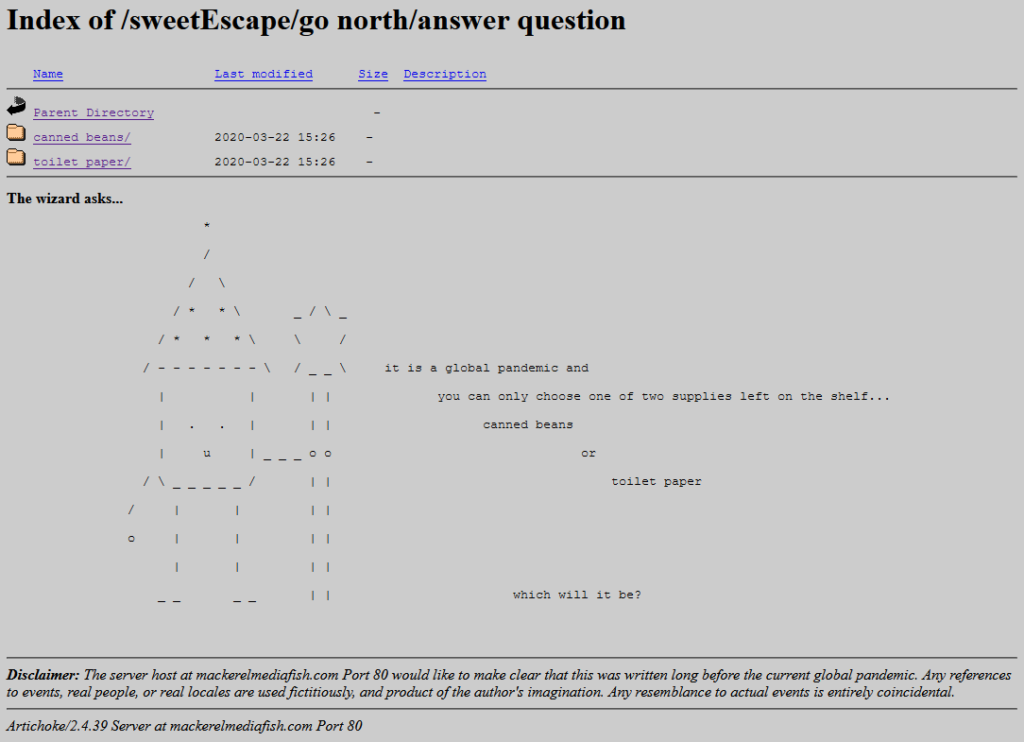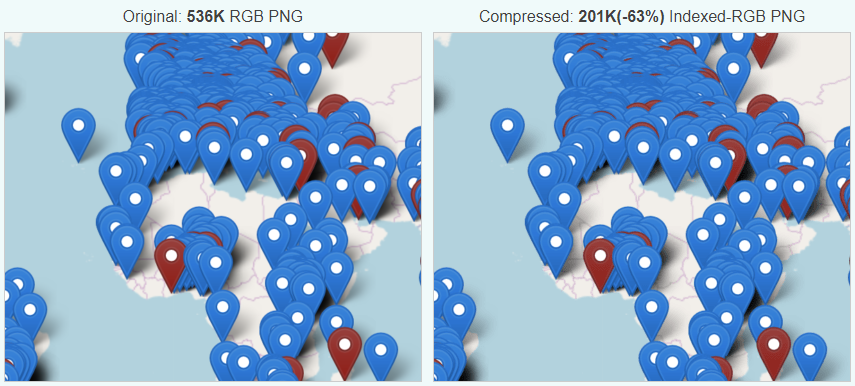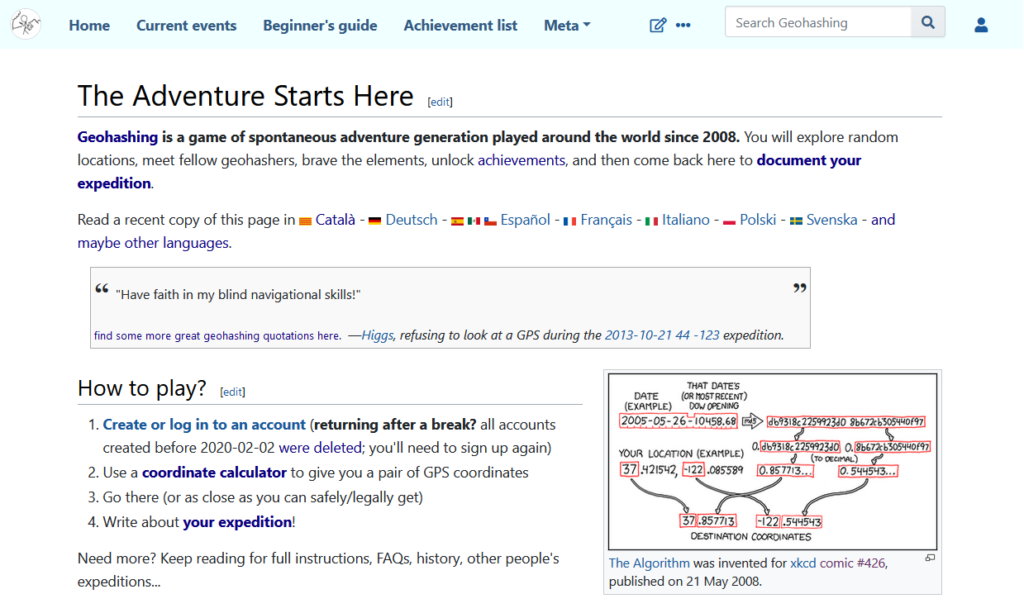Normally this kind of thing would go into the ballooning dump of “things I’ve enjoyed on the Internet” that is my reposts archive. But sometimes something is so perfect that you have to try to help it see the widest audience it can, right? And today, that thing is: Mackerelmedia Fish.

What is Mackerelmedia Fish? I’ve had a thorough and pretty complete experience of it, now, and I’m still not sure. It’s one or more (or none) of these, for sure, maybe:
- A point-and-click, text-based, or hypertext adventure?
- An homage to the fun and weird Web of yesteryear?
- A statement about the fragility of proprietary technologies on the Internet?
- An ARG set in a parallel universe in which the 1990s never ended?
- A series of surrealist art pieces connected by a loose narrative?
Rock Paper Shotgun’s article about it opens with “I don’t know where to begin with this—literally, figuratively, existentially?” That sounds about right.

What I can tell you with confident is what playing feels like. And what it feels like is the moment when you’ve gotten bored waiting for page 20 of Argon Zark to finish appear so you decide to reread your already-downloaded copy of the 1997 a.r.k bestof book, and for a moment you think to yourself: “Whoah; this must be what living in the future feels like!”
Because back then you didn’t yet have any concept that “living in the future” will involve scavenging for toilet paper while complaining that you can’t stream your favourite shows in 4K on your pocket-sized supercomputer until the weekend.

Mackerelmedia Fish is a mess of half-baked puns, retro graphics, outdated browsing paradigms and broken links. And that’s just part of what makes it great.
It’s also “a short story that’s about the loss of digital history”, its creator Nathalie Lawhead says. If that was her goal, I think she managed it admirably.

If I wasn’t already in love with the game already I would have been when I got to the bit where you navigate through the directory indexes of a series of deepening folders, choose-your-own-adventure style. Nathalie writes, of it:
One thing that I think is also unique about it is using an open directory as a choose your own adventure. The directories are branching. You explore them, and there’s text at the bottom (an htaccess header) that describes the folder you’re in, treating each directory as a landscape. You interact with the files that are in each of these folders, and uncover the story that way.
Back in the naughties I experimented with making choose-your-own-adventure games in exactly this way. I was experimenting with different media by which this kind of branching-choice game could be presented. I envisaged a project in which I’d showcase the same (or a set of related) stories through different approaches. One was “print” (or at least “printable”): came up with a Twee1-to-PDF converter to make “printable” gamebooks. A second was Web hypertext. A third – and this is the one which was most-similar to what Nathalie has now so expertly made real – was FTP! My thinking was that this would be an adventure game that could be played in a browser or even from the command line on any (then-contemporary: FTP clients aren’t so commonplace nowadays) computer. And then, like so many of my projects, the half-made version got put aside “for later” and forgotten about. My solution involved abusing the FTP protocol terribly, but it worked.
(I also looked into ways to make Gopher-powered hypertext fiction and toyed with the idea of using YouTube annotations to make an interactive story web [subsequently done amazingly by Wheezy Waiter, though the death of YouTube annotations in 2017 killed it]. And I’ve still got a prototype I’d like to get back to, someday, of a text-based adventure played entirely through your web browser’s debug console…! But time is not my friend… Maybe I ought to collaborate with somebody else to keep me on-course.)

In any case: Mackerelmedia Fish is fun, weird, nostalgic, inspiring, and surreal, and you should give it a go. You’ll need to be on a Windows or OS X computer to get everything you can out of it, but there’s nothing to stop you starting out on your mobile, I imagine.
Sso long as you’re capable of at least 800 × 600 at 256 colours and have 4MB of RAM, if you know what I mean.






